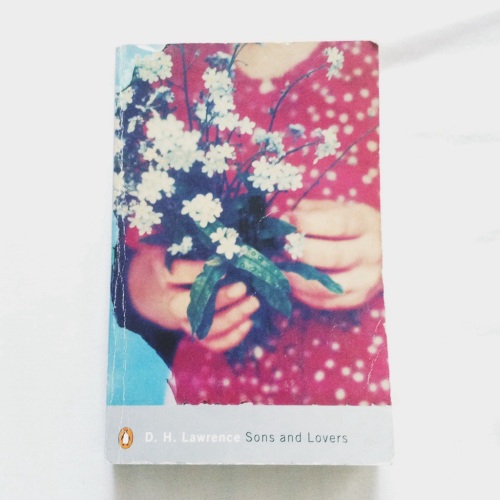Reading Sons and Lovers: Men and Women
by Charlotte Reads Classics
This week I have been reading Sons and Lovers, with some surprising results. Firstly, I have fallen for this book. I miss it when I’m not reading it and I’ve started looking forward to my commute (I have a new, longer but more picturesque train journey) because it means more minutes I can spend alone in the company of my new book.
This comes as quite the surprise because I have only ever read one other D. H. Lawrence novel – Women in Love – and hated it. I’m not actually sure why I even decided that I should buy another of his books, but there you go. Glad I did.
The beginning of Sons and Lovers follows Mr and Mrs Morel through their early years of marriage. They live in a mining town with young children and not much money. It is quite a depressing beginning to the story – life is a struggle and their marriage is unhappy. They live in a row of houses alongside the other miners and their families, which leads to a very public sort of life. The houses are joined together and people are always out and about in the alleyways that run along the back. There are no truly private spaces.
Whilst there are obvious downsides, like people barging into your house and everyone knowing your business, there is a real sense of community that just doesn’t seem to exist anymore. When Mr Morel is ill and can’t go to work, the rest of the street looks out for his wife and children:
Every Friday, Parker and the other butty put by a portion of the stall’s profits for Morel’s wife. And the neighbours made broths, and gave eggs, and such invalid’s trifles. If they had not helped her so generously in those times, Mrs Morel would never have pulled through, without incurring debts that would have dragged her down.
There is a tendency in hindsight to idealise the period before the First World War as a long Edwardian summer. Being published in 1913 means that the book has none of this golden hue. Life is hard. I have been trying to imagine living Mrs Morel’s life, but I actually felt quite depressed by the prospect. Obviously I can’t imagine it without being influenced by modernity, but I really empathised with Mrs Morel’s moments of despair:
The prospect of her life made her feel as if she were buried alive.
I don’t think we see marriage today as permanently as it has been in the past. Here, Mrs Morel comes to despise her husband (this isn’t a spoiler, I promise! It’s on the blurb!) but her lot is completely tied to his. She has young children, she has no means of making a living – she is imprisoned by his successes or failures.
Books like Sons and Lovers always make me wonder about men, women and relationships. Readers today can appreciate both sides of the marriage because the roles of men and women aren’t as fixed as they were. I can appreciate that having to work long hours in a dangerous and grueling job for very little wages would be both stressful and isolating.
The Morels seem hardly able to connect with each other. She falls out of love, he doesn’t. The time they spend together becomes a pause for her, something to endure before her real life continues. For him it is a gap, an absence, a lack. He needs her for comfort; she needs him for means of living.
“But it’s as well to be a woman as a man,” he said, frowning.
“Ha! – is it! Men have everything.”
“I should think women ought to be as glad to be women, as men are to be men,” he answered.
“No!” she shook her head. “No! Everything, the men have.”
“But what do you want?” he asked.
“I want to learn. Why should it be that I know nothing!”
Next, Part Two, when the children are grown up. It will be interesting to follow the changing attitudes that come with a new generation and the end of childhood innocence.


After I’ve finished Of Human Bondage I’m going to re-start it – you’ve inspired me! 🙂
It is a surprise how much I’m enjoying it…